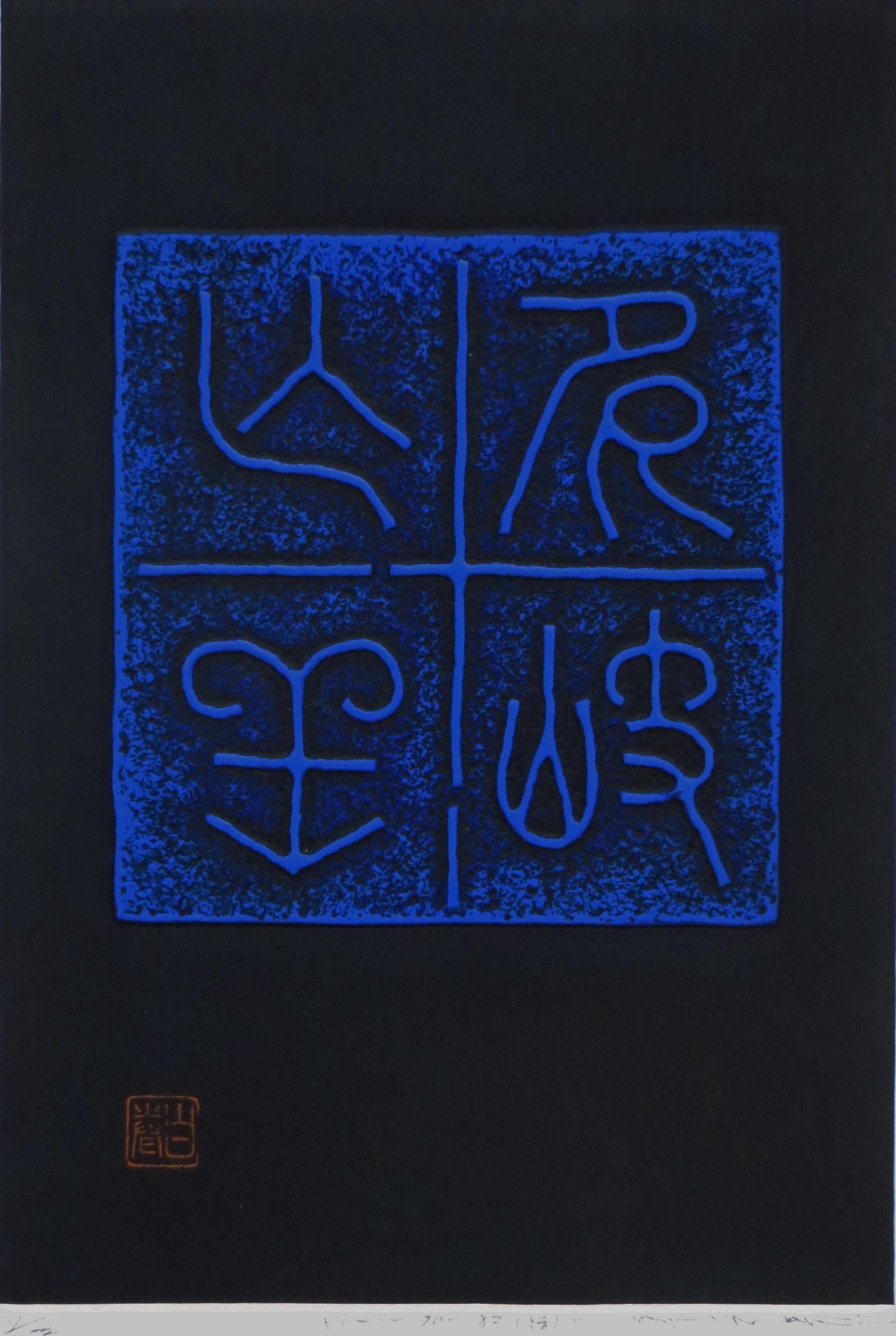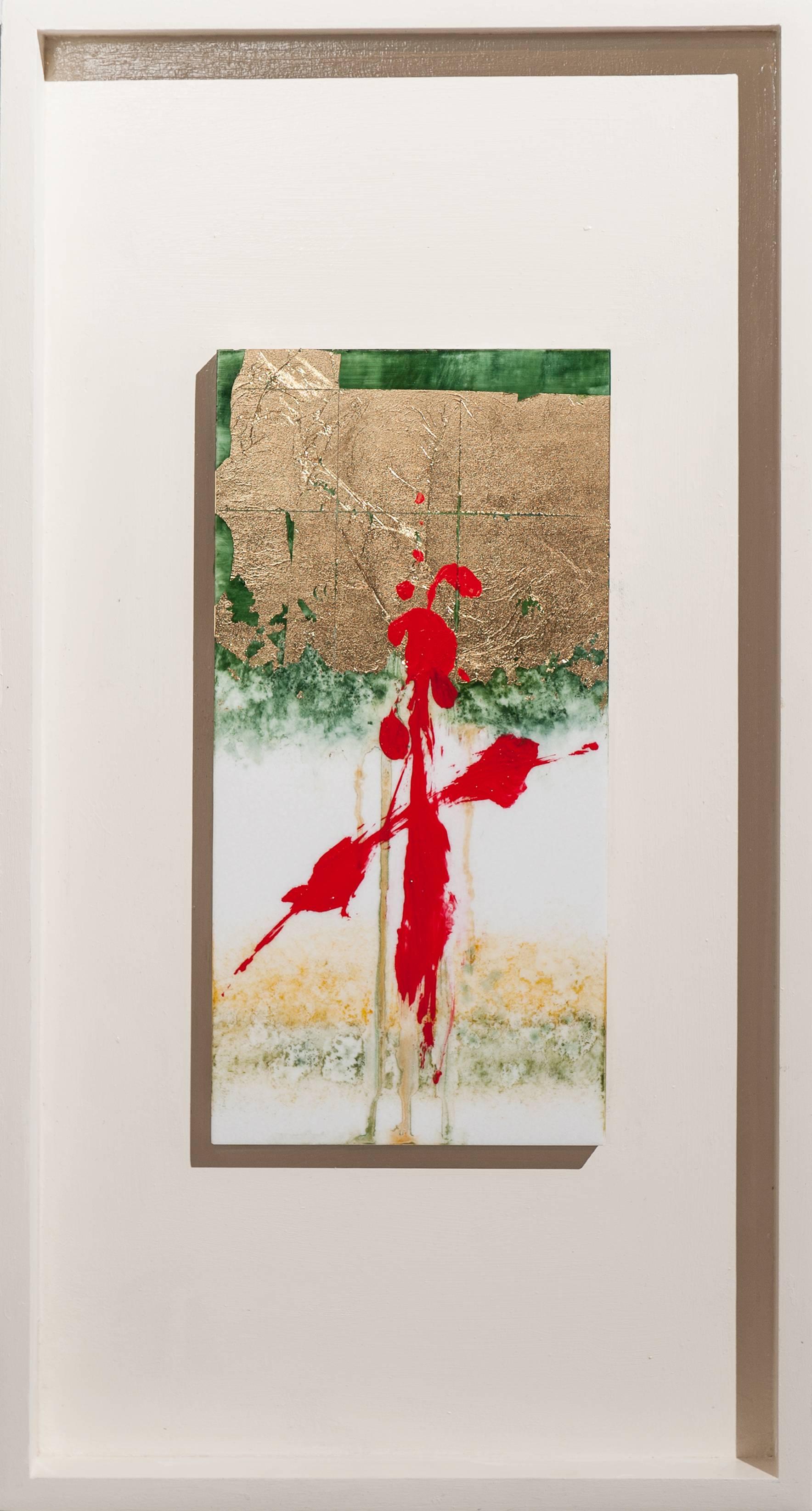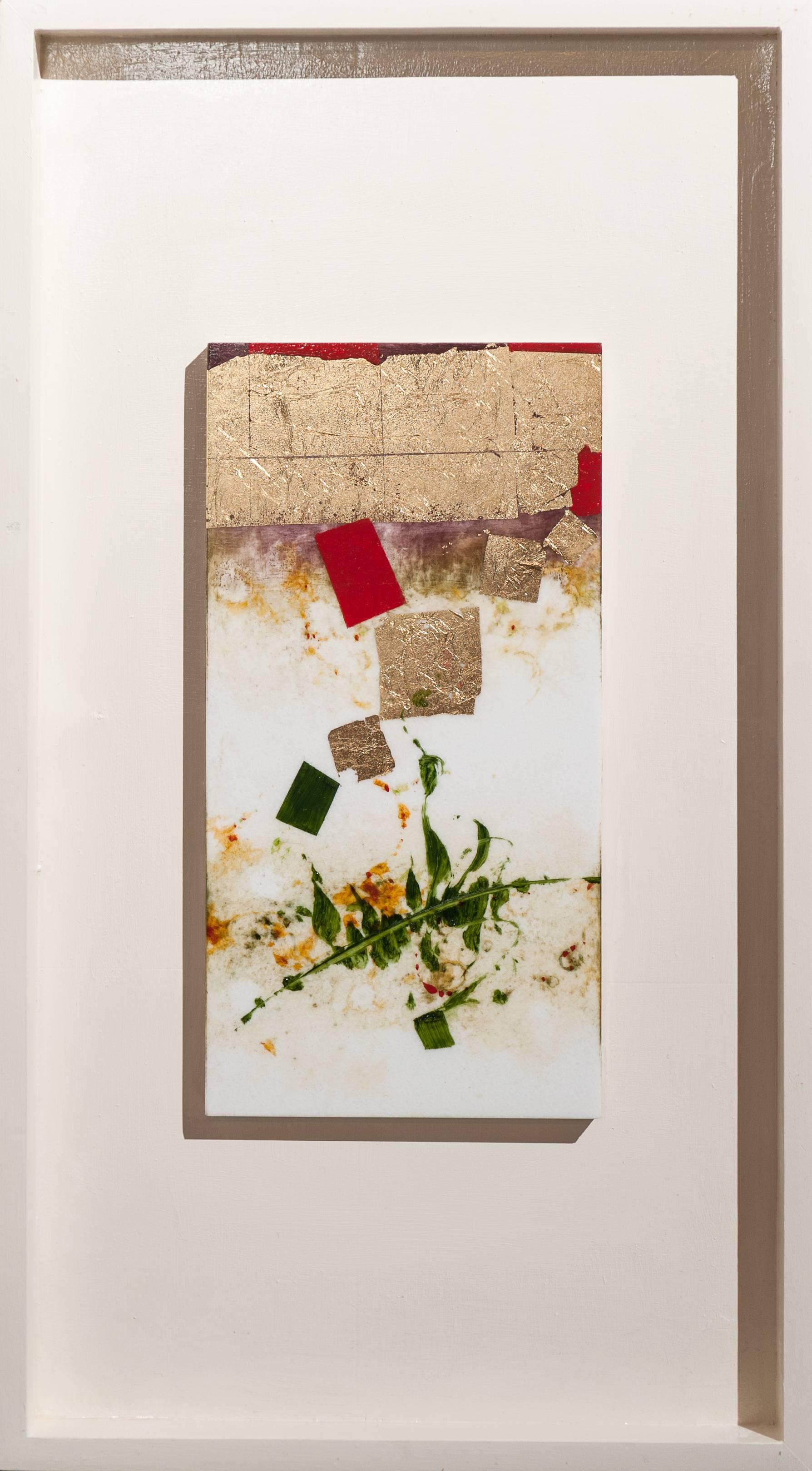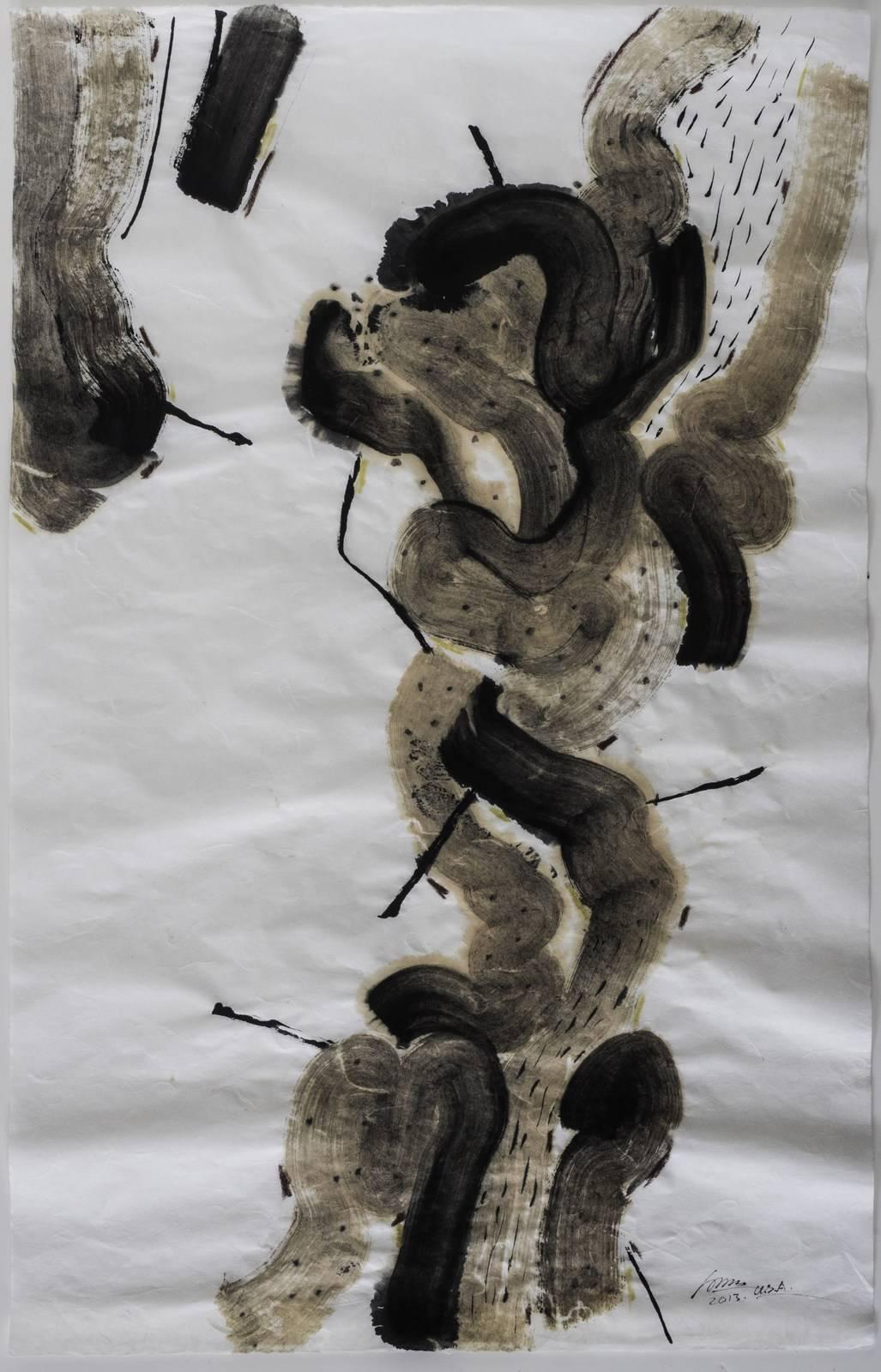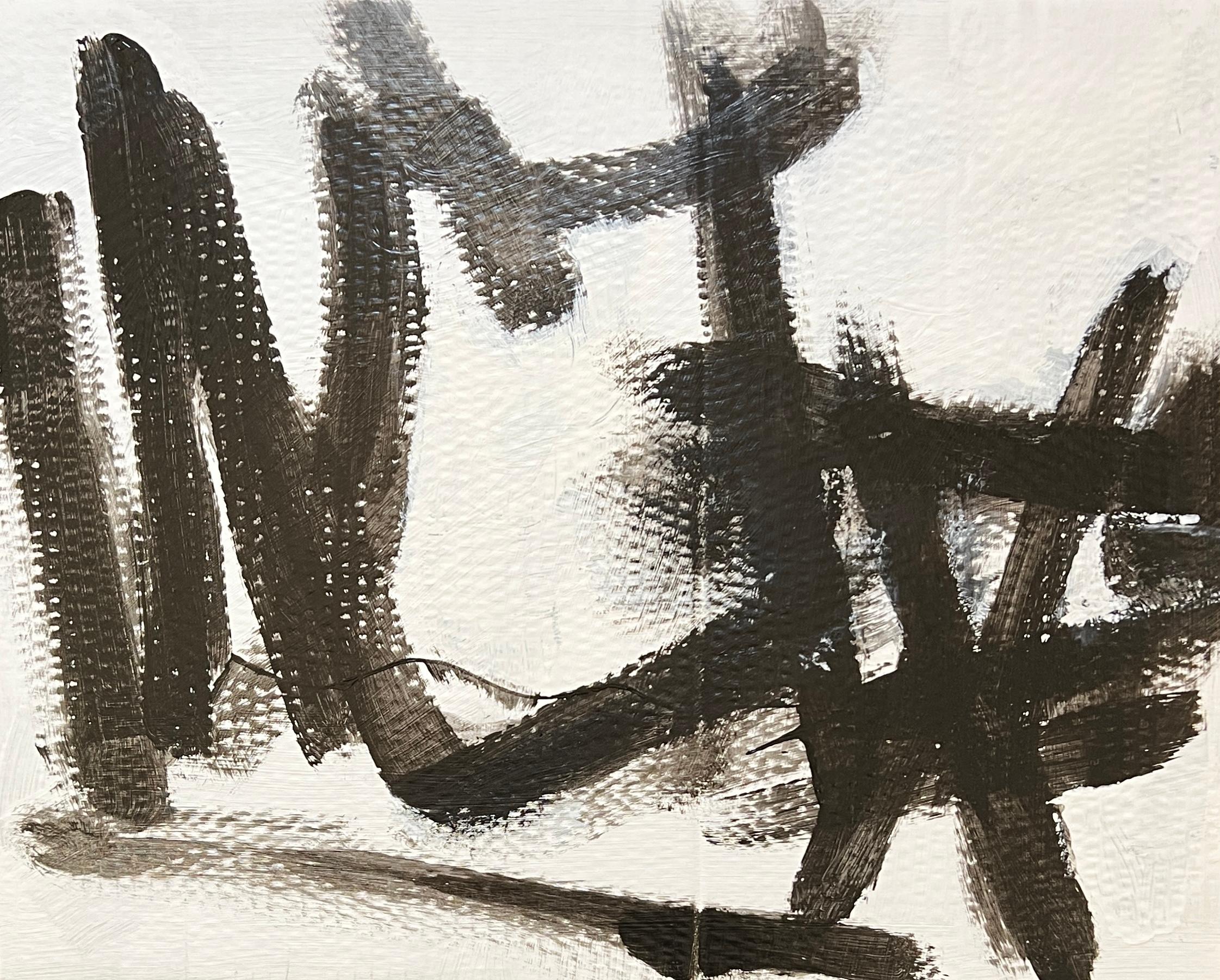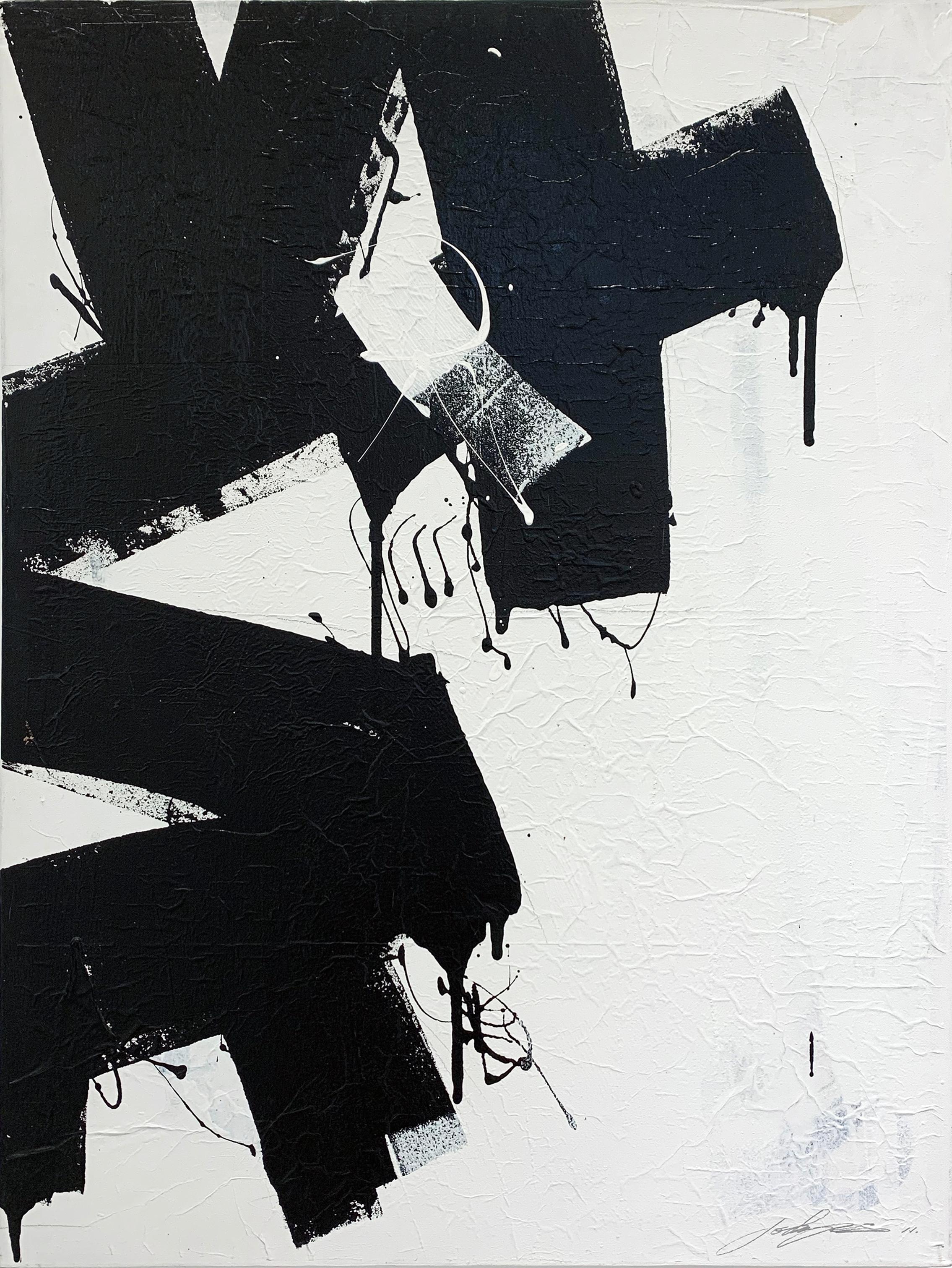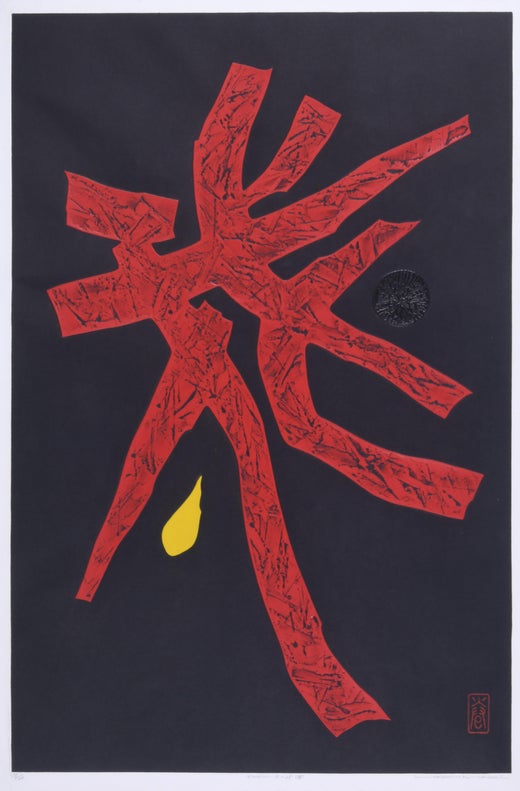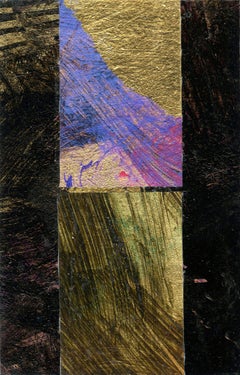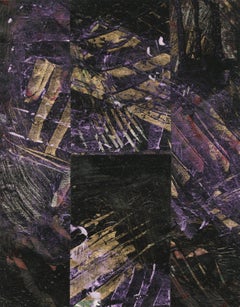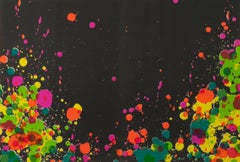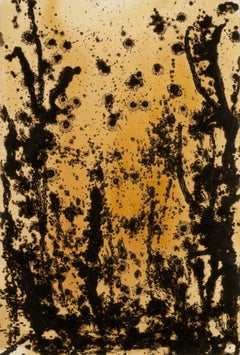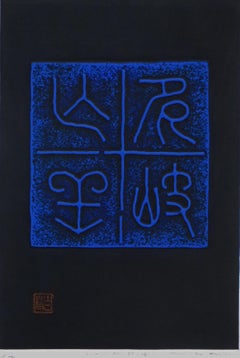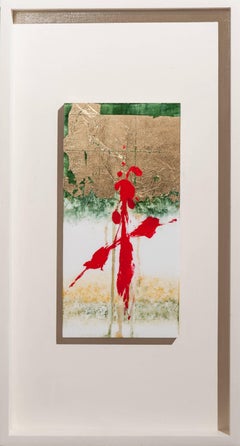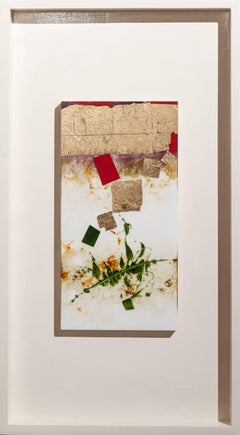Poem 71-25 (Me)
Color woodcut with cement mold embossing, 1971
Signed, titled and numbered in pencil (see photos)
Edition 100 (55/100) (see photo)
Signed with the artist's stamp lower right of image (see photo)
COVER IMAGE, The Life and Works of Haku Maki, Daniel Tretiak, 2007, hence an imnportant print by the artist
Conditon: Excellent
Never framed
Colors very fresh and vibrant
Soft folds in the small upper margin (usual)
Image size: 30 x 19 1/4 inches
Reference: Haku Maki No. 942
Haku Maki (1924-2000)
Born in Asomachi, Ibaraki prefecture, in 1924, Haku Maki 巻 白 served in the WWII before becoming a high school teacher in 1950. Around this time he began to produce his mixed media-prints. While his process began with carving a woodblock, he would the add cement around the carved areas. Once the cement had dried, he would carve over his original lines. This process produced the deep embossing so characteristic of his works. In terms of subject matter, Maki explored abstracted Chinese characters, though also ceramics and persimmons later in life. After 1960, he began to add spots of color to his compositions. A master of modern Japanese abstract printmaking, Maki's work can be found in the collections of the Museum of Modern Art and the British Museum.
“The artist was born with the name Maejima Tadaaki in 1924 in the small town Asomachi in the Ibaraki Prefecture of Japan. He graduated at Ibaraki Teachers' College and became vice-principal of an elementary school there. In 1945 he was in a special squadron of kamikaze pilots and his life was to be ended. However, with the surrender of Japan on August 14, 1945 his life was spared, and he became a teacher at a high school. He studied printmaking at the Modern Print Research Society with Koshiro Onchi andi, in 1950 he changed his name to Haku Maki. His work has a few characteristic design elements for which he became famous - deep embossing and the use of distorted Chinese characters.
Maki developed his own process of relief printmaking, applying mixed media printing techniques. The artist first carved a conventional woodblock. Then he put cement around the carved areas. When the cement had dried out, Haku Maki carved and chiseled the cement into the shape he wanted to have. Then a wet, double-layered paper was used for the printing. Thus prints made in this technique show strong embossing. Haku Maki's works look nearly three-dimensional. In 1969, Maki designed 21 block prints to accompany the book Festive Wine, ancient poetic songs from the 5th to the 9th century and published by John Weatherhill, Inc. His later works are composed of a broad range of variations on the use of calligraphic shapes.
In later life health problems made it often difficult for him to create his art works and he was assisted by his wife in the printing of the editions. Haku Maki died of cancer in 2000.”
Courtesy Annex Galleries
References:
James A. Michener, The Modern Japanese Print: An Appreciation, 1962, plate 10
Frances Blakemore, Who's Who in Modern Japanese Prints, 1975, pp. 99-100
Helen Merritt and Nanako Yamada, Guide to Modern Japanese Woodblock Prints: 1900-1975, 1992, p. 85
Daniel Tretiak, The Life and Works of Haku Maki, 2007
“Born Maejima Tadaaki in Ibaraki prefecture in 1924, the artist Haku Maki relocated a great deal within his lifetime, moving to Kanagawa, Shizuoka, and Tokyo. After WWII he graduated from Ibaraki Teacher's College in 1945 and took the role of Vice Principal at an elementary school. He was a participant of the printmaking group, Ichimoku-kai (First Thursday [or wood] Society), which had been founded in 1946 by the influential sosaku hanga ('creative print') artist Onchi Koshiro (1891-1955). There were never more than 20 members in the group which included contemporaries such as Toko Shinoda (b. 1913), and the informal gatherings ceased around 1950. Not long after, he chose the name Haku Maki (lit. 'white roll') at some point in the early 1950's. In 1954, Maki married Takako Umeno, who along with his sister-in-law, became his primary assistant. Maki's mixed media printing technique used cement relief attached to carved woodblocks or cardboard and deep embossing printed on double-layered paper. His compositions are primarily derived from abstractions of pottery shapes or kanji and old texts in various calligraphy styles. He participated in the first and second Tokyo International biennales in 1957 and 1960, and other international exhibitions. In 1962 a Maki calligraphic print was selected by a committee of art experts from the United States and Japan to be included in Michener's monumental and lavish folio featuring 10 tipped-in original sosaku hanga prints, The Modern Japanese Print: An Appreciation, which was issued in a limited edition of 475. In 1969 his international reputation was further enhanced by his illustrations for Festive Wine, a book of ancient Japanese poems published by John Weatherhill, Inc. Haku Maki's work is found in numerous Western museums including the Museum of Modern Art in New York, the Honolulu Academy of Arts, the Art Institute of Chicago, and the Museum of Fine Arts, Boston.”
Courtesy Scholten
Surviving the Pacific War - a period of his life which saw him drafted into a Kamikaze “Special
